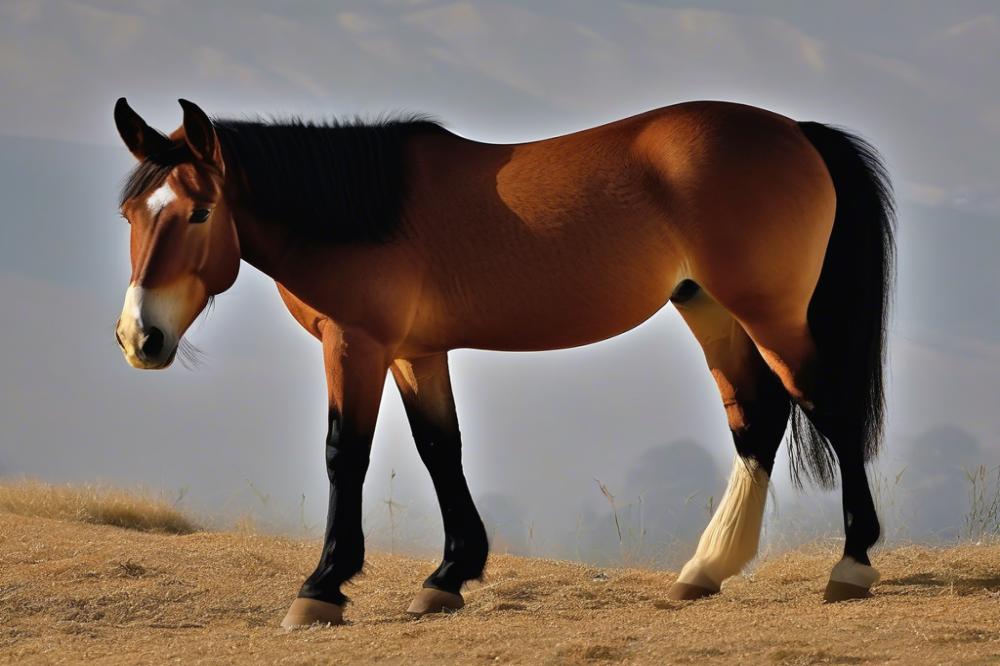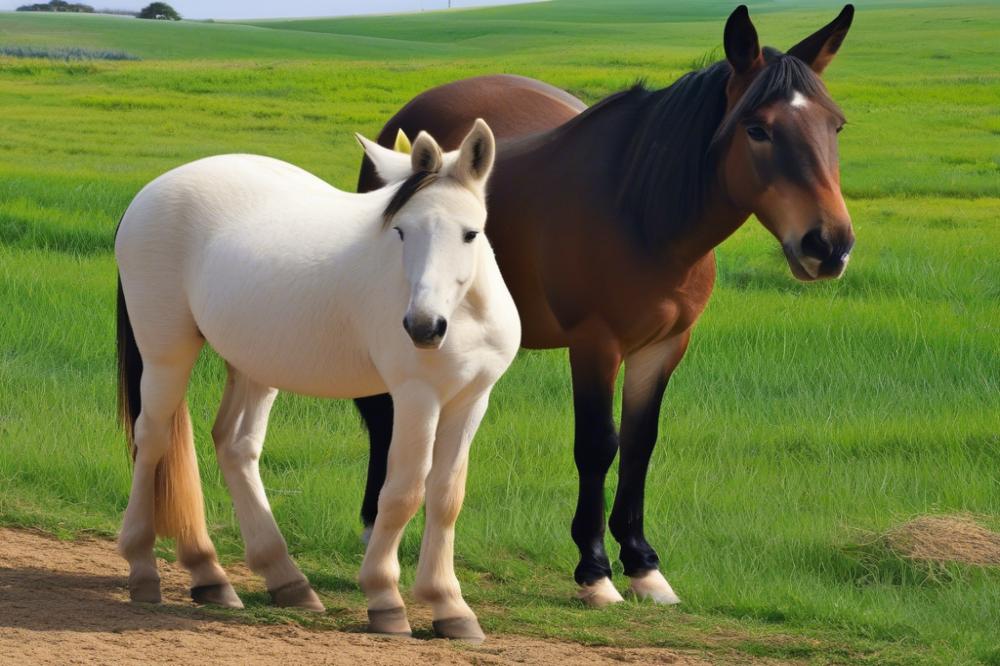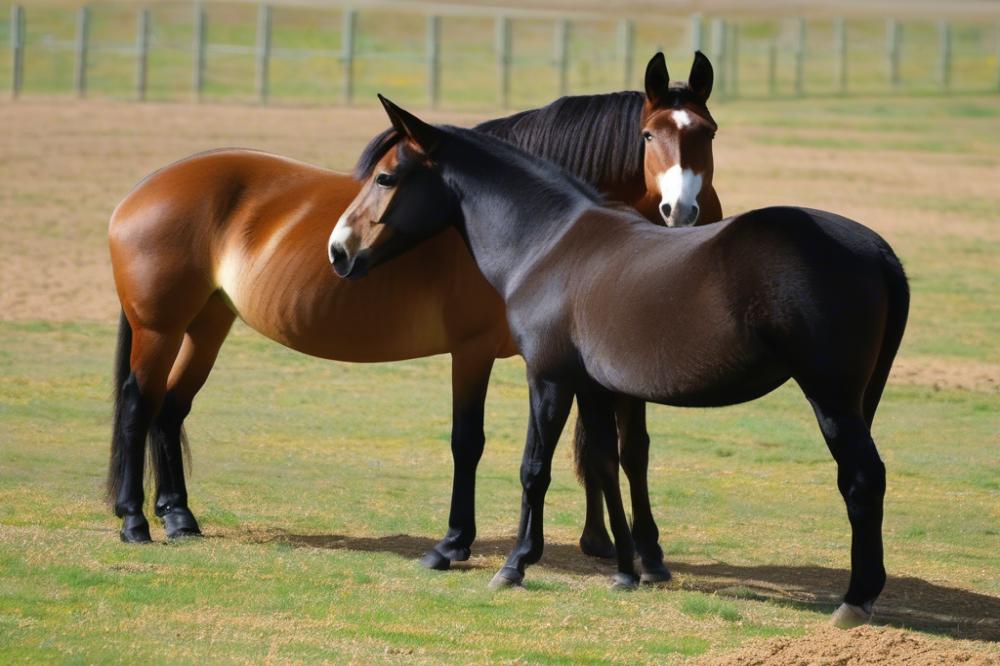Mules in Agriculture and Transport
Mules have been around for centuries, serving mankind in various roles. These remarkable hybrids result from horse and donkey crossbreeding, and they have become quite popular in agriculture and transport. Farmers appreciate their strength, endurance, and gentle temperament. When you think about it, mules are like that dependable friend who always shows up when you need them. Whether it’s hauling heavy loads or providing comfort during long journeys, they can be counted on.
Across the globe, different cultures have embraced the mule for its unrivaled ability to navigate tough terrains. In more mountainous regions, for example, mules often replace vehicles on winding paths. With their surefootedness and resilience, it’s no wonder they’ve earned a permanent spot on the hippodrome la malbrande during events showcasing the beauty of these hybrid animals.
The Importance of Understanding Reproductive Capabilities
When discussing mules, one big question arises: can mules reproduce? This subject might sound simple, but it has layers. Understanding their reproductive capabilities matters considerably for mule breeding enthusiasts who want to explore the potential of these valuable animals.
Mules are typically sterile due to the way equine genetics work. While they inherit a mix of traits from both horses and donkeys, their odd number of chromosomes can create challenges for reproduction. This contributes greatly to mule fertility issues. Farmers looking to breed unique mules might need to adjust their expectations since they cannot generate new offspring.
Despite these challenges, the popularity of mules remains strong. Their utility in agriculture and transport illustrates why people invest so much time and resources to learn about them. It’s like trying to find the missing puzzle piece to complete a fascinating picture! So, in the world of hybrid animals, the quest for knowledge about mules continues, ensuring their legacy in agriculture remains bright and promising.
Understanding Mules

Definition and Characteristics of Mules
Mules are fascinating animals, don’t you think? They are the offspring that result from mating a male donkey, known as a jack, with a female horse, called a mare. These hybrids boast a lot of remarkable traits. For one, their combination of strength and endurance makes them excellent working animals. Many people appreciate mules for their sure-footedness and stubborn streak, which can sometimes be amusing. In the world of animal lovers, they sure stand out!
Genetic Makeup of Mules as a Hybrid of Horses and Donkeys
When we dive into equine genetics, it gets really interesting. Mules inherit 63 chromosomes—32 from the horse parent and 31 from the donkey parent. This odd number plays a big role in their ability to reproduce. Unlike their parents, mules are generally sterile. That means mule reproduction is quite rare. This situation stems from the differences in the horse and donkey’s genetic blueprints. The mismatched chromosomes limit mule fertility. Regardless of this, they often show desirable qualities from both sides of their family tree.
Comparison with Horses and Donkeys in Terms of Physical and Behavioral Traits
Mules possess a blend of features from both horses and donkeys. They often have the sturdy build of a donkey but can be taller like a horse. Their ears are longer than a horse’s, affirming their donkey lineage. Color patterns can vary widely as well, making them visually diverse. Behaviorally, mules can show the intelligence of a donkey with the spirited nature of a horse. If you’ve ever seen a mule work, they display dedication that rivals any horse.
Many people find mules to be easier to manage than horses. Their calm demeanor often shines through in difficult situations. Unlike horses that can be skittish, mules tend to think before they act. This makes them great companions on the trail or in the field. Horse and donkey crossbreeding not only produces a hybrid animal that’s hardworking but also one that can be quite witty in their actions. It’s always a delight to witness their unique personality!
So, next time you see a mule, remember there’s more to them than just their strong back and long ears. They are a perfect mix of horse and donkey traits, creating an animal that is both fascinating and full of surprises.
Reproductive Anatomy of Mules

Overview of Mule Reproductive Systems
Mules are fascinating creatures. They are born from a horse and a donkey, making them hybrid animals. This mix of parentage gives them some interesting traits. However, when it comes to mule reproduction, things get tricky. Most mules are sterile. Unlike horses or donkeys, they cannot produce viable eggs or sperm. This is due to the differences in the number of chromosomes between horses and donkeys. Horses have 64 chromosomes while donkeys have 62. Mules have 63, which creates problems during reproduction.
Differences in Anatomy Between Male and Female Mules
When discussing mule breeding, it is essential to note the differences between male and female mules. Male mules, also known as geldings if castrated, have reproductive organs similar to horses. However, the genetic issues can lead to no functioning testes that can produce sperm. On the other hand, female mules have a uterus and ovaries. Yet, they still face challenges with mule fertility. Contrary to what you might expect, neither sex can reproduce. Their anatomy may seem normal, but the underlying genetics tell a different story.
Implications of Reproductive Anatomy on Mating and Breeding
Understanding the reproductive anatomy helps explain why mules cannot reproduce. There is a clear limitation with mule reproduction when considering that their chromosomes don’t match up. This is a sad fact for those hoping to breed mules. Many people are fascinated by horse and donkey crossbreeding, but the mule cannot carry on that lineage. Imagine trying to find a puzzle piece that just doesn’t fit. That’s what it’s like for mules in the breeding world. Animal lovers who consider breeding must look at other alternatives. Since mules bring the best of both worlds, they remain incredibly popular for work and companionship. Still, this inability to mate leaves many wondering about more about equine genetics and the role of hybrids. It’s a quirky situation in the animal kingdom!
Can Mules Reproduce

Explanation of Mule Infertility Due to Chromosomal Differences
Mules are curious creatures, born from a horse and a donkey. This unique crossbreeding means they carry an unusual number of chromosomes. A horse has 64 chromosomes, while a donkey has 62. Mules end up with 63 chromosomes, leading to a mismatch. This odd number complicates things when it comes to producing offspring. The chromosomes have trouble pairing up during reproduction, making it nearly impossible for mules to conceive.
When scientists dive into equine genetics, they discover that this hybrid animal tends to face significant challenges. The mixed parentage may create some fantastic traits, but it doesn’t help when it’s time to breed.
Surveys and Studies on Mule Fertility Rates
Most surveys show a startling trend: mule fertility rates are extremely low. In fact, studies suggest that fewer than one in a million mules can produce a foal. So, it seems reasonable to say that mules often miss out on the joys of parenthood. Horse and donkey crossbreeding produces some incredible animals, but mule breeding doesn’t often lead to successful reproduction.
Researchers have looked into this phenomenon and confirmed that mules are more of a sideline in the grand scheme of horse breeding. They shine as excellent working animals, but nature has not designed them to carry on their legacy.
Clarification on the Rarity of Successful Reproduction Cases
Successful reproduction in mules is almost a myth. Tales of mules giving birth exist, but they are few and far between. Most of these rare incidents happen under very unusual circumstances. So, if someone spins a yarn about a mule foal, those stories should be taken with a grain of salt. They often bring a chuckle, but reality bites hard.
In the end, despite all their charm and usefulness, mules are not built for fertility. Their status as hybrid animals solidly places them in a category where reproduction is a mere dream. It’s safe to say that mule reproduction is about as likely as finding a needle in a haystack.
Cases of Reproduction in Mules
Mules have a reputation for being sterile, and for good reason. Most people think of them as the ultimate hybrid animals, a mix of horse and donkey. But surprisingly, there have been a few documented cases of mule reproduction throughout history. They are so rare that they almost seem like legends or campfire stories.
Discussion of Documented Cases of Mule Reproduction
Instances of mules giving birth are unusual. In fact, only a handful of cases have been recorded. These mules were usually female and managed to conceive after mating with a horse or a donkey. Such occurrences often shock equine enthusiasts since they challenge what is commonly believed about mule fertility.
Factors Influencing Rarity of Reproduction
Why is it so hard for mules to reproduce? One main reason lies in equine genetics. Mules have an odd number of chromosomes, typically 63, which complicates their ability to breed. In most cases, this genetic mix doesn’t work well for reproduction. Additionally, the combination of dominant horse genes and donkey genes can result in the mule’s reproductive organs being less developed. It’s almost as if nature throws in a twist just to keep things interesting!
Exploration of Anecdotal Evidence and Historical Accounts
There are some intriguing stories out there. Many farmers have claimed they witnessed a mule breeding, only to be left with a sense of disbelief when the mule did not get pregnant. Anecdotes from history mention mules that were said to have birthed foals, yet these claims often lack scientific evidence. Often, these tales sound more like folklore than facts. Still, they add a layer of mystery around the whole topic of mule reproduction.
In the end, mule breeding may seem like a fairytale, but it opens the door to many interesting discussions. Have you ever heard about a mule that had a foal? If so, it might just be one of those rare gems in the world of animals that keeps the imagination alive.
The Role of Hybrid Vigor
Let’s talk about hybrid vigor, a fascinating concept in the world of animal breeding. Basically, it refers to the advantages that come when two different breeds are crossed. Mules, which are the offspring of a horse and a donkey, showcase this phenomenon quite well. They often display traits that are stronger or more resistant than their parents.
When it comes to health and adaptability, hybrid vigor shines bright. Mules are typically hardier than horses or donkeys alone. They tend to be tough creatures. This toughness helps them thrive in various environments, whether it’s a sunny pasture or rocky mountain trails. Who wouldn’t want that kind of resilience?
If mule reproduction were possible, the results could be intriguing. Imagine the offspring of two mules! These hybrid animals would possibly inherit the hybrid vigor traits, leading to a new generation that may be even tougher than their parents. The world of equine genetics is endlessly complicated yet exciting. Mule breeding could open doors to traits that could help them adapt to many climates. Who knows what wonders might arise?
Mule fertility is still a hot topic. Since mules are sterile, we can’t actually see how the next generation would look. Yet, if they were able to reproduce, we could witness a new blend of characteristics developing. It’s a curious thought to consider what the future might hold.
Alternative Breeding Methods
When it comes to traditional horse and donkey crossbreeding, people might think about natural mating first. However, artificial insemination offers a different route. This technique allows breeders to introduce sperm from a stallion into a mare without direct contact. It sounds a bit sci-fi, right? Well, it’s been used successfully for years!
Exploration of Artificial Insemination in Horses and Donkeys
Breeders have made remarkable strides in equine genetics through artificial methods. They can select the best stallions for breeding by testing their genetic traits. Donkeys aren’t left behind either! The same technology helps improve donkey populations. This technique provides more flexibility, making it easier to manage breeding schedules, especially with busy animals. Who doesn’t want to plan their horses’ love lives?
Why Artificial Reproductive Techniques Are Not Applicable for Mules
Now, here’s where things get a little tricky. Mules are hybrids, resulting from a horse and a donkey—a combination of two different species. Their unique genetic makeup leads to a situation where mule fertility is an uphill battle. Crossover chromosomes from each parent don’t always match up well. Because of this, mules typically end up sterile. So, while artificial insemination can work wonders for horses and donkeys, it hits a brick wall with mules.
Future Potential for Breeding Hybrids
Despite the challenges, many people are curious about mule reproduction. Scientists explore new ways to understand hybrid animals better. They dream of methods to possibly achieve mule births someday. Recent advancements in genetics keep the hope alive. Who knows? There may be breakthroughs where mule breeding could become more viable in the future. It’s a bit like searching for a needle in a haystack, but it’s worth the effort! Let’s keep our fingers crossed for mule enthusiasts everywhere.
Wrapping It All Up
Mules are fascinating creatures that bring together the best traits of horses and donkeys. However, when it comes to reproduction, things get a bit complicated. While these hybrids are known for their strength and stamina, they are typically sterile. This means that mules cannot reproduce, leaving them unable to contribute to the next generation of these remarkable animals. So, what does this say about them?
Understanding why mules can’t reproduce adds depth to equine studies. Their unique genetics give insight into the complexities of hybrid vigor and fertility. Many researchers find mules intriguing because they represent a blend of two different species, each with its own traits and characteristics. Observing how they behave can teach us about animal behavior overall. In fact, if you watch a mule interact with other animals, you might notice some fascinating displays of dominant horse body language. It’s like watching a whole different world!
For those who love animal gadgets, mules also shine. They often require specialized equipment to help manage their needs, from saddles to halters. This means that mules aren’t just interesting scientifically; they also present a range of practical challenges and solutions in equine care. People who work with mules often have stories to tell about the adjustments they’ve made to accommodate these sturdy hybrids.
Looking to the future, studies on mules and other hybrids could uncover more about their unique reproductive challenges. Research might focus on understanding genetics better or exploring new methods that could address reproductive health in animals. There’s so much left to discover! New insights could not only enhance our knowledge of mules but also inform practices for related species.
In summary, while mules cannot reproduce, their existence provides valuable lessons for both science and animal husbandry. As we continue to explore the wonders of the animal kingdom, one can only look forward to what the future holds for these incredible hybrids. Who knows? More research could lead to breakthroughs that change how we view reproduction in animals altogether!



